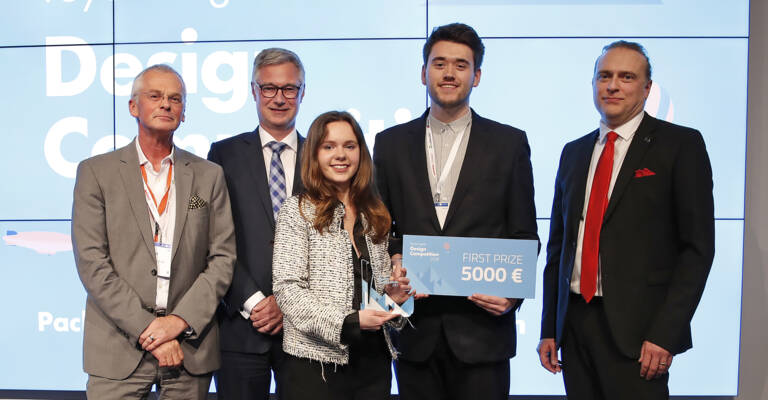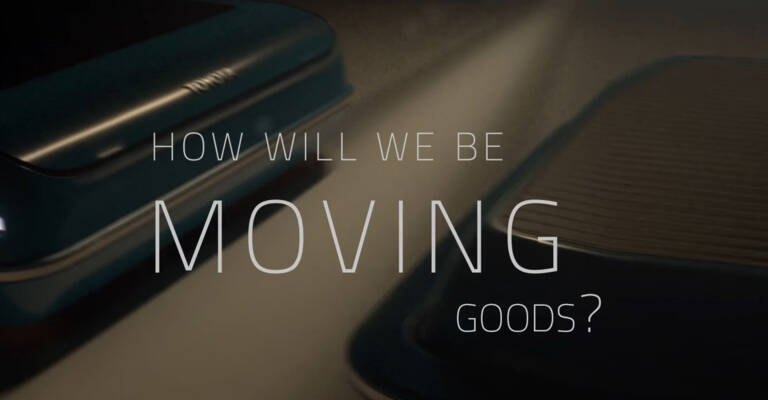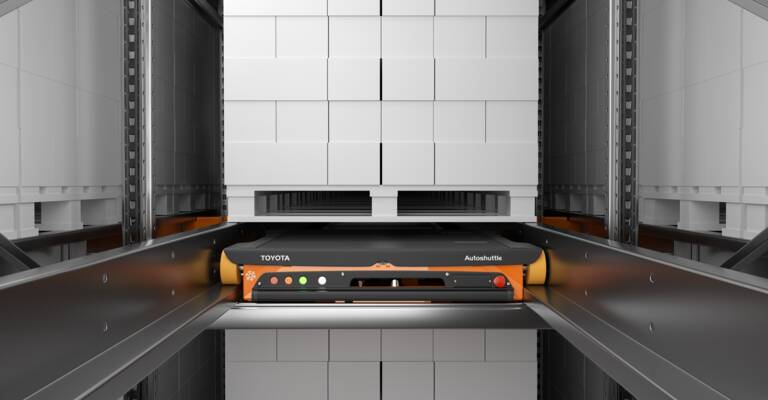It’s all about that final mile
Text by Lars Norén
Pity, isn’t it? The traditional supply chain works beautifully, close to 100 per cent of the way from where you order your shoes, television or cutlery – all the way to your door. Nearly. Because when your precious delivery is about to land you’re not there, you’re not home – you’re at work.
This whole thing had got Magnus Oliveira Andersson thinking, too. He’s head of design at Toyota Material Handling Europe, and his job is all about logistics, designing the right machine, the right solution for getting things to where they ought to be, safely and with a minimum of effort.
Magnus and the team at Toyota figured the idea of finding an alternative to the traditional supply chain, which would also take care of that last mile part of a delivery, would be a suitable theme for the company’s design competition 2018.
And on 24th April of this year third-year industrial design students Hannah Rayner and Matthew Putman stepped on to the stage at the CeMAT fair in Hannover, proud winners of the Toyota Logistic Design Competition. (CeMAT is part of the Hannover Messe – one of the world’s largest and best-known industrial events.)

When I spoke to Hannah and Matthew via Skype, Hannah said, “When we got to the fair we just didn’t realise the scope of the event.” Although the minute they landed in Germany there were signs. “We were whisked away in a taxi to the awards show,” said Matthew. “And there were some really impressive people there!”
Hannah and Matthew approached the task of finding a solution to the final mile problem, by doing quite a bit of research. “We found that delivery drivers experienced low job satisfaction,” said Hannah.
And as the design brief was rather open-ended, the student duo decided to zoom out and look at the bigger picture, rather than trying to solve the first problem they came across. This took them in the direction of the newfangled gig economy. (By 2020, predicts an Intuit study, 40 per cent of American workers will be independent contractors.)
“The solution we came up with had to be socially sustainable. That was important to us,” Matthew explained. “Yes, and environmentally sound, too,” added Hannah.
They call their invention Al.Packer, and it’s as simple as it is ingenious: when a person is not home to receive a package, a network of home-agents (neighbours, essentially) is ready to step in.
Said Magnus Oliveira Andersson about Hannah and Matthew’s last mile delivery concept: “Their solution takes a different approach by using a third-party’s social network enterprise to bridge the last mile in an efficient way. The solution is practical and easy to run, making it customer-focused.”
Loughborough Design School is at the top of the UK tree
Students at Loughborough’s highly-ranked design school are encouraged to participate in competitions, which may be part of the reason why students graduating from here are the most employable in the UK, according to a poll carried out by the British Industrial Design Association.
I wanted to know what made Hannah and Matthew pick product design, when there is so many other things to choose from at university.
“I’ve always loved the creative and performing arts,” said Hannah, smiling. “Then there’s the academic work as well… and learning how to combine the mechanical with the electronic.”
Matthew: “Design for me… well, I’ve always been impressed by designers. Also, I want to put my own spin on things. Seeing people get excited about the work you do.”
So, who of the two came up with the winning answer to Toyota’s challenge, I wanted to know.
“Oh, we’re friends as well as being students here. So we just shoot out ideas, and who said what… sorry, we just don’t know,” Hannah said. “And sometimes we have ideas we don't even quite realise,” added Matthew.
To learn more about the Toyota Logistic Design Competition click here



